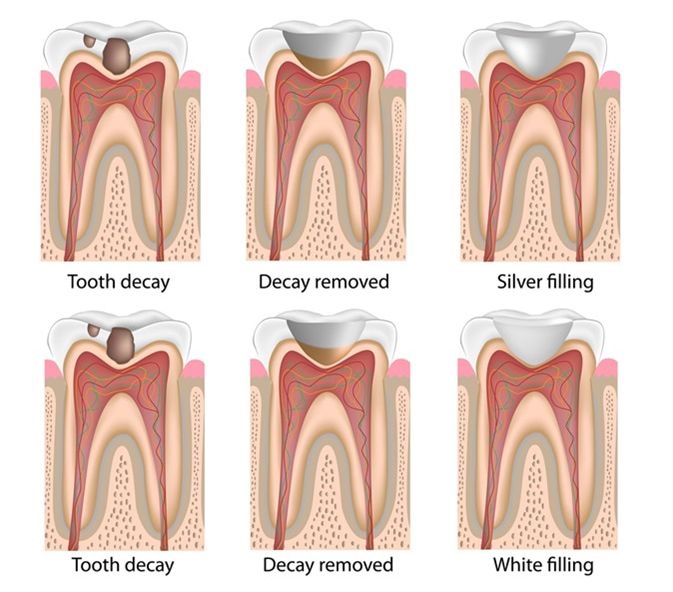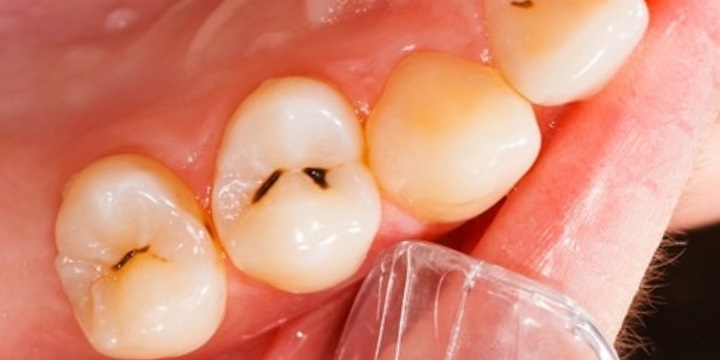Dental Fillings

Dental Fillings
The Era of Mercury Fillings Are Over!
Healthier, stronger, and more aesthetic modern materials to improve your smile and health concerns have replaced unsightly silver fillings.
Tooth-coloured fillings were created as an alternative to traditional metal dental fillings. Tooth fillings coloured to look like a natural tooth are known as Composite Resin Dental Fillings and are made of a plastic dental resin combined with porcelain and glass particles. These types of fillings are durable and are way more natural looking than amalgam fillings.
If you have a cavity in a tooth or broken fillings or if your teeth are full of mercury fillings or amalgam fillings you may want to ask your dentist.
Procedure for
Dental Fillings
- Tooth Decay Removal
When you visit your dentist to get a filling, the dentist will determine if you may proceed without anesthesia, in some cases a local anesthesia will be given to numb the area to prevent sensitivity. Next, your dentist will remove decay from the tooth, using a drill. - Shaping
A drill, which dentists call a handpiece, uses metal cones called burs to cut through the enamel and remove the decay. Once all the decay is removed, the dentist will shape the space to prepare it for the filling. Different types of fillings require different shaping procedures to make sure they will stay in place. Your dentist may put in a base or a medicine to protect the tooth’s pulp to prevent sensitivity and to release fluoride to protect the tooth from further decay. - Filling and Polishing
A composite resin material is used for fillings to fill the cavity. The shade of the composite materials nearest to the shade of the teeth is chosen to match the teeth and therefore look natural. To cure or harden the materials, a laser curing machine is used. Finally, after the filling is placed, your dentist will use burs to finish and polish the tooth.

Dental fillings. Image Credit: Alila Medical Media / Shutterstock
What You Need To Know About Dental Fillings
A filling is a way to restore a tooth damaged by decay back to its normal function and shape. When a dentist gives you a filling, he or she first removes the decayed tooth material, cleans the affected area, and then fills the cleaned out cavity with a filling material. By closing off spaces where bacteria can enter, a filling also helps prevent further decay. Materials used for fillings is a composite resin that are matched to be the same color as your teeth and therefore used where a natural appearance is desired. The ingredients are mixed and placed directly into the cavity, where they harden. Composites may not be the ideal material for large fillings as they may chip or wear over time.
Determining If You
Need A Filling
Your dentist may use several methods to determine if you have tooth decay (caries), including:
Observation
Some discolored spots on your teeth may indicate decay, but not all of them. Your dentist may use an explorer, a metal instrument with a sharp tip, to probe for possible decay. Healthy tooth enamel is hard and will resist pressure by the explorer. Decayed enamel is softer. The instrument will stick in it slightly.
X-rays
X-rays can show decay developing in the enamel on the sides of teeth where they come together, as well as in the dentin that lies under the enamel. Current fillings or other restorations also may block the view of decay.
Worn out fillings
Cracked, worn out old fillings
Tooth Sensitivity
Sensitivity to hot and cold food and drinks
- GENERAL DENTISTRY
- COSMETIC DENTISTRY
- ORTHODONTICS
- ORAL SURGERY
- PEDIATRIC DENTISTRY
- PROSTHODONTICS
- ENDODONTICS
- PERIODONTICS
- DIGITAL X-RAYS





